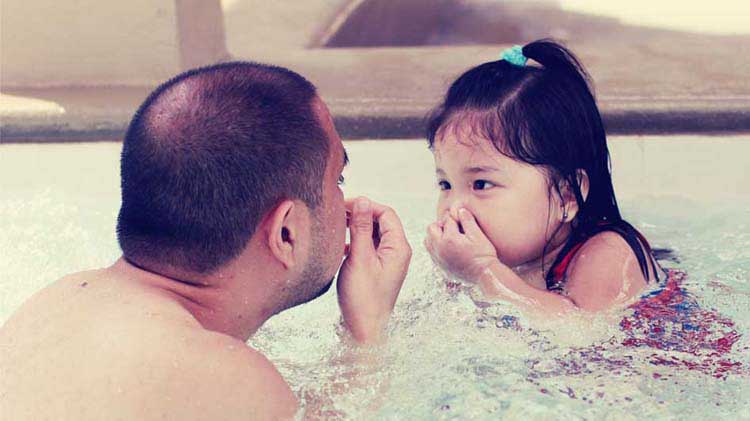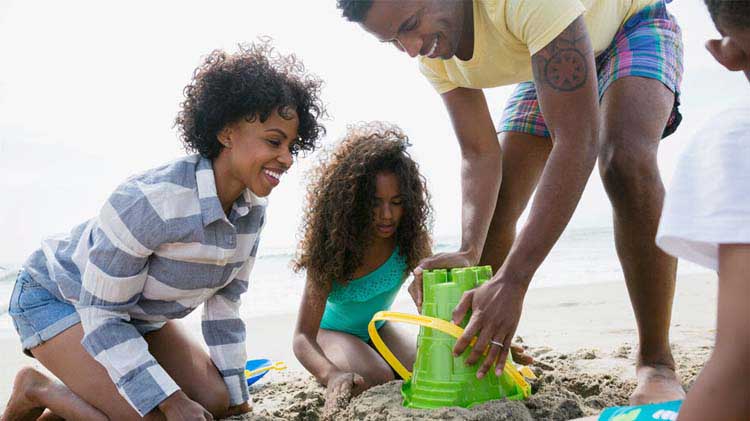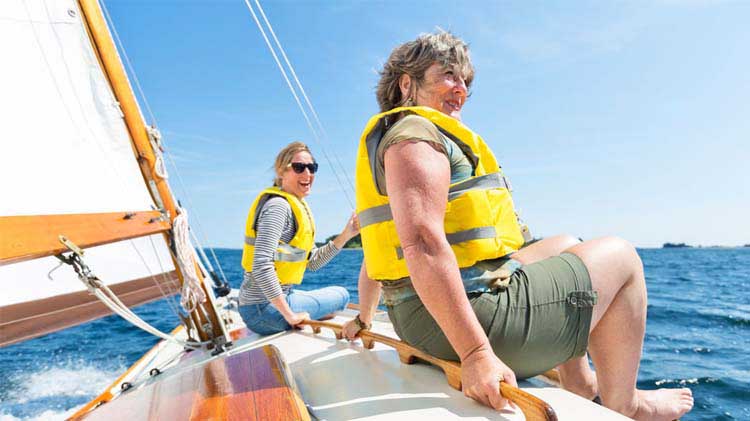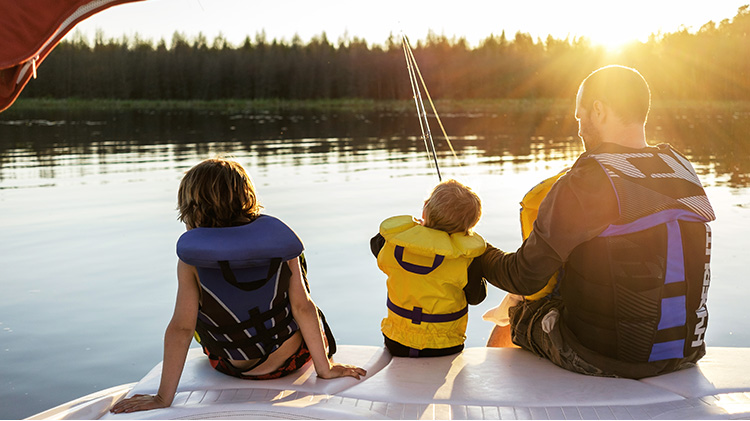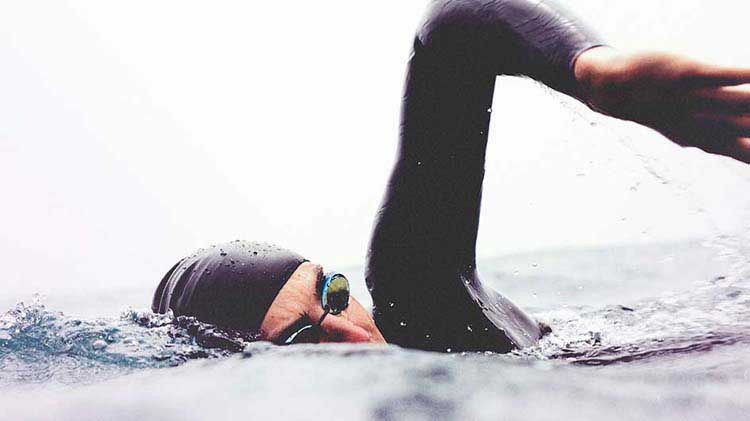Dip your toes in the water with our swimming and water safety tips
Whether taking a dip in a pool or natural body of water, adults and kids alike should play it safe.
Swimming is a great activity for all ages and can provide many physical benefits. However, it’s important to prioritize swim safety to help avoid risk and create an enjoyable experience.
Drowning — according to the Centers for Disease Control and Prevention — is the leading cause of unintentional injury death for children ages 1 to 4 years, and the second leading cause for children ages 5 to 14 years in the United States. Over 4,000 fatal unintentional drownings occur annually, so follow water safety precautions no matter where you and your family swim.
General water safety
- Try to enroll children in swimming lessons at an early age. Formal swimming lessons can help reduce the risk of drowning in children. Many cities have swimming lessons available through local parks and recreation programs as well as gyms with pools. You can also check with the Red Cross to find swim classes in your area.
- Learn Cardiopulmonary Resuscitation (CPR). Knowing how to perform CPR might mean the difference between life and death. Check with the Red Cross about registering for a CPR class in your area.
- Use only U.S. Coast Guard-approved life jackets. Young or inexperienced swimmers should use approved life jackets. Do not substitute for any sort of air-filled or foam toys. They are not designed to keep swimmers safe.
- Children should always be supervised. Whether you're in the backyard, a public pool or at the beach, make sure there is a responsible, designated person to watch the water when children are swimming. Avoid spending time on your phone — it can take five seconds for a child to be submerged and 25 seconds to drown.
- Swim with a buddy. It's a leading practice for swimmers of all ages, including adults.
- Swim sober. Avoid using alcohol or drugs (recreational and/or certain prescriptions) while swimming or watching over other swimmers. It can impair your judgment, balance, coordination and your body's ability to stay warm.
- Try not to hyperventilate. Breathing faster and/or deeper — before swimming underwater or trying to hold a breath for a long period of time — could cause a swimmer to pass out and drown. It's recommended to relax and breathe normally when swimming.
- Enter the water feet-first. Serious injuries — including paralysis — can occur from diving headfirst into unknown water and hitting the bottom. Enter headfirst only when the area is clearly marked for diving and has no obstructions.
- Test the water temperature before you get in. Jumping into cold water could shock your body, elevate your heart rate and blood pressure and can also slow your muscles, making it difficult to swim.
- Have a phone handy. No matter where you are swimming, the ability to call 911 in an emergency could be a lifesaver.
Swimming pool safety
- Secure pool with appropriate barriers. It’s wise, and in some cases required, to install a four-foot or taller fence around backyard pools and use self-closing and self-latching gates that open away from the pool.
- Consider safety alarms. If your house opens directly into the pool area, you may want to install a door alarm or self-closing door. Using a surface wave sensor or underwater alarm can help provide added protection from accidental falls into the pool.
- If a child is missing, always check the pool first. If a child has fallen into the pool, every second counts in preventing an accidental drowning.
- Empty portable pools when not in use. Children can drown in as little as one inch of water. See that all portable inflatable and baby pools are drained and put away immediately after use.
- Remove toys from the pool when not in use. They can attract young children into the pool. It's better to keep them stored out of sight.
- Keep a safety kit handy. In case of an emergency, keep a first aid kit within reach that includes a pair of scissors to cut hair, clothing or a pool cover. Lifesaving equipment such as life rings and reaching poles are also recommended.
- Stay away from pool drains. Limbs, hair or clothing can become entangled if a drain is faulty. If you suspect they may not be functioning properly, ask your pool service provider to inspect them.
- Follow posted safety rules. These usually include no running, pushing or dunking.
Oceans, lakes and river safety
Natural bodies of water present an increased risk of injury, especially ocean waters. When braving the wilderness, remember to:
- Swim near lifeguards. It's estimated that the chance of drowning at a beach protected by trained lifeguards is less than one in 18 million per year. Lifeguards can also advise you on the safest place to swim and what areas to avoid. If there's no lifeguard on duty, pack your own flotation device for emergencies.
- Stay within designated swimming areas. They are usually marked by ropes or buoys and are more likely to be free of weeds, rocky underwater terrain and other dangers.
- Beware of rip currents. They are powerful, channeled currents of water flowing away from shore that can occur at any beach with breaking waves, including the Great Lakes. If you find yourself caught in one, swim parallel to the shore until you are out of the riptide, then swim back to shore. If you get tired, float on your back and kick your feet.
- Don't swim in polluted water. Pay attention to warning flags or alerts about contaminated water. Natural bodies of water aren't chemically treated like pools, so there's a higher risk of spreading bacteria. Don't drink the water and plug your nose when your head is submerged. Never swim while sick or with an open cut, and always shower after swimming. If you're unsure whether water is clean enough to swim in, consider not getting in.
- Know your limits. Swimming in open water is much different than in a pool. Cold water, currents and other dangerous conditions can challenge even the strongest swimmers. If you are unsure about your limits, you may want to start out slowly and not venture too far from shore.
Play it safe
Help avoid accidents and injury by taking common-sense precautions.
- Stay close to land and swim within designated swimming areas.
- Don't dive into shallow or unknown water. Rocks and other hazards could be just beneath the surface.
- Insist on wearing a life jacket if you or someone with you is a weak swimmer.
- Check the weather. Never swim when lightning is in the forecast.
- Take a break if you begin to feel cold, tired or hungry.
- Monitor your fellow swimmers and know how to recognize drowning signs when you see them.
Know how to respond
Be prepared to react quickly to these emergency situations:
- Unconscious swimmer. If you can safely get the victim to land, do so quickly. Begin CPR, if needed, and call 911.
- Hypothermia. Prevent further heat loss. Warm the victim up slowly and seek medical attention right away. To help act quickly, know the signs and causes of hypothermia.
Knowledge is key when it comes to water and pool safety. Educating children from a very young age, and keeping yourself informed, can help provide a lifetime of safe swimming.
